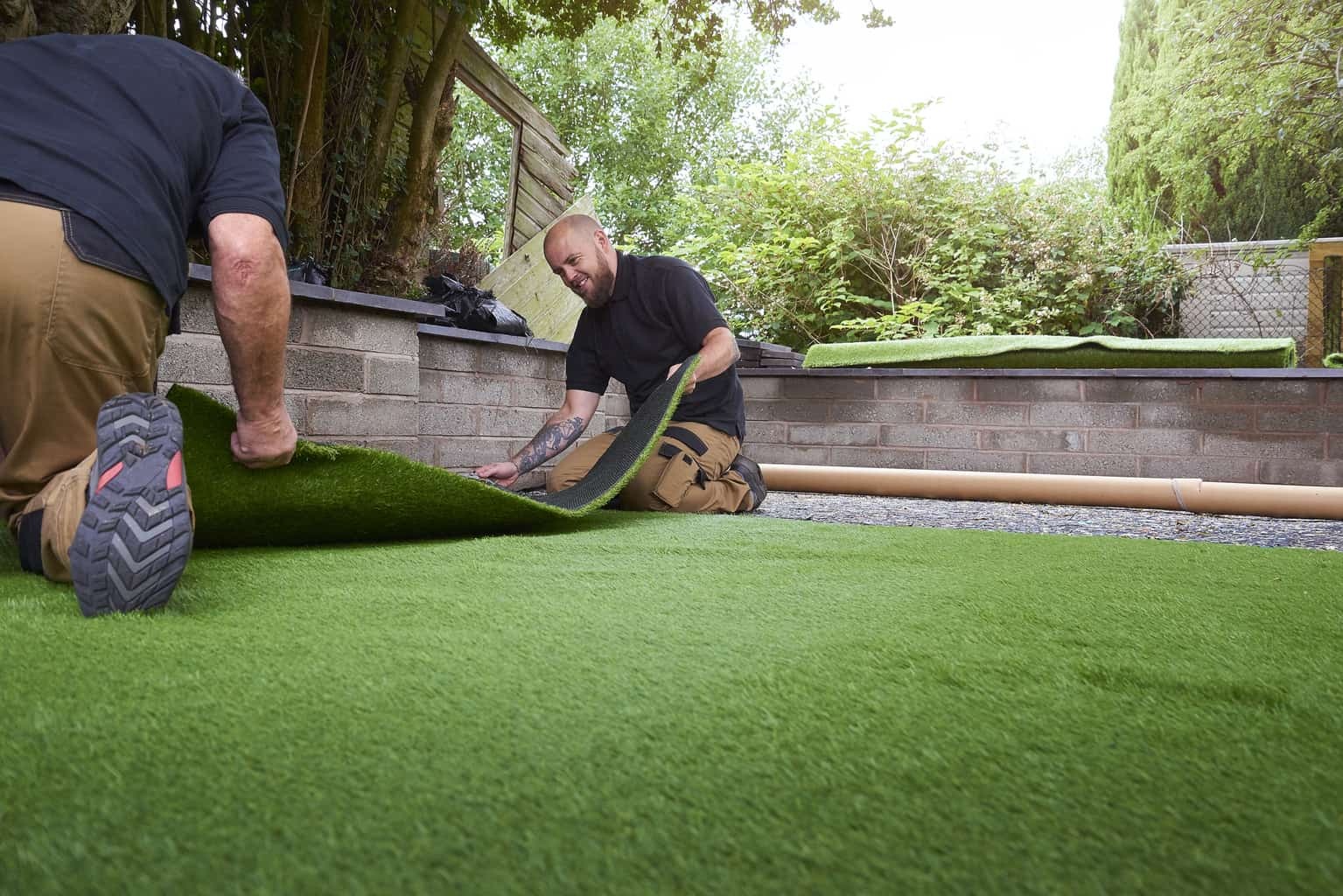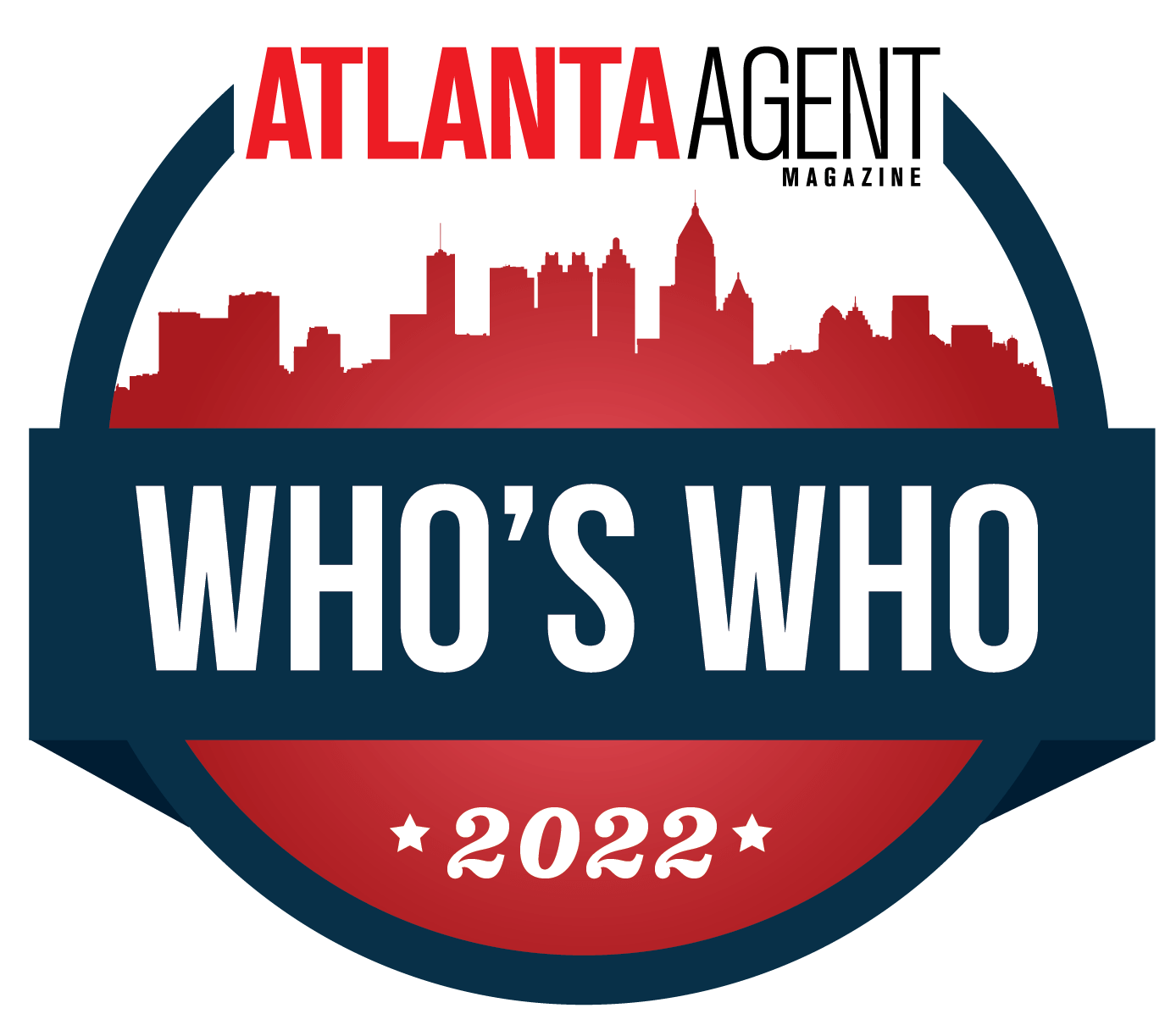
If clover appears in your yard uninvited, you may think is that good or bad luck. Before you consider removing there are actually some eco friendly benefits of keeping clover as a low-maintenance grass alternative or companion plant. Keep in mind that landscaping is a crucial factor in enhancing a property’s curb appeal. As homeowners prepare to sell their homes, they are increasingly considering alternative lawn options and it just so happens that two of these alternatives that have gained prominence are artificial grass and you guessed it clover lawns. Both have unique benefits and considerations that potential homeowners should consider and we wanted to fill you in on the details and do a comparison.

Artificial Grass: The Low Maintenance, High Durability Choice
- Doesn’t Require Water
- Pet Friendly
- Durable for High Traffic Areas of Use
- Saves Money Long Term
- Looks Like Fresh Cut Grass All Year Long
- Feels Same as Natural Grass
- No Dirt or Mud
- Environmentally Friendly & Safe
- Fertilizer & Pesticide FREE
Real grass requires regular watering and weeding and sometimes fertilizing in which artificial turf doesn’t need any of the maintenance or TLC. Artificial grass is ideal where drought is an issue. Another benefit of synthetic turf is that you won’t need to deal with burrowers digging up parts of your lawn.
High-quality artificial turf can last 20 to 25 years. If any areas get damaged over time, you can refill those patches and its hardly noticeable.

Artificial grass, also known as synthetic turf, offers several benefits that appeal to homeowners seeking low maintenance requirements and durability. One of its key advantages is the capability to maintain a vibrant, green appearance throughout the year, unaffected by weather changes. This permanence gives the property a pristine and manicured look, boosting its aesthetic appeal significantly.
Artificial grass is also incredibly durable, able to withstand high foot traffic without showing signs of wear and tear. High-quality artificial turf can last 20 to 25 years. If any areas get damaged over time, you can refill those patches and its hardly noticeable. It does not require watering, mowing, or the application of fertilizers or pesticides, which can be time-consuming and expensive activities.
 However, these benefits come with a relatively high upfront cost. Installation of artificial grass requires a significant initial investment, although the long-term savings from reduced maintenance can offset this over time. Some potential buyers may also be put off by the synthetic nature of this option, as they may prefer natural grass, reducing its potential to increase property value.
However, these benefits come with a relatively high upfront cost. Installation of artificial grass requires a significant initial investment, although the long-term savings from reduced maintenance can offset this over time. Some potential buyers may also be put off by the synthetic nature of this option, as they may prefer natural grass, reducing its potential to increase property value.
Clover Lawns: The Eco-Friendly, Resilient Choice

Clover lawns, on the other hand, offer a different kind of charm. Their lush, green appearance and tiny white flowers give them a natural and meadow-like appeal, creating a peaceful, serene atmosphere. As an eco-friendly alternative to traditional lawns, clover lawns also attract pollinators, enriching the local ecosystem.
Clovers are remarkably resilient and can thrive under a variety of conditions. They have an excellent ability to resist drought, reducing the need for constant watering. Plus, they naturally produce nitrogen, enriching the soil and eliminating the need for synthetic fertilizers, in other words it’s a truly living type of mulch. And did you know that clover grows worldwide and comes in over 300 different species that are available – whoa!
Popular Clover Lawn Varieties

Dutch White Clover | The variety most commonly seen in chemical-free parks or yards is Dutch white clover, which grows and spreads quickly when started in the spring. It will mature to 8 to 10 inches tall but can be kept shorter with regular mowing

Micro Clover | A great choice for homeowners who want to transition away from grass but still have a tidy lawn, has a dense growth habit, drought tolerant and matures to 4 to 6 inches tall. Similar to Dutch White Clover but smaller and can withstand low mowing

Red Clover | A perennial herb, red clover is ideal to grow with other types of clover or turf grass. The low maintenance plant is a hardier choice and grows to be 12 to 18 inches tall.
Maintenance requirements for clover lawns are also significantly lower than for traditional lawns. They require less mowing, and their ability to outcompete weeds reduces the need for chemical weed killers. However, homeowners should note that clovers can attract more birds, butterflies and as it is a host for pollinators such as honey bees, which could be a concern for families with young children or individuals with bee allergies.

The cost of installing a clover lawn is generally lower than that of artificial grass, making it a more affordable option. However, it may not appeal to all potential buyers due to its less manicured look and the presence of bees, which could potentially impact the property’s value.
Potential Impact on Property Value
The effect of artificial grass and clover lawns on property value largely depends on buyer preferences and local real estate market trends. Artificial grass could increase property value due to its low maintenance requirements and evergreen appearance, especially in regions where water conservation is a concern. However, its synthetic nature could be a drawback for buyers who prefer natural landscaping.
Clover lawns, with their eco-friendly appeal, can be a selling point for environmentally conscious buyers. However, their less traditional look may not appeal to all buyers, potentially limiting their impact on property value.

Both artificial grass and clover lawns offer unique benefits that can enhance a property’s curb appeal. The choice between the two depends largely on the homeowner’s personal preferences, budget, and local market trends. It’s essential to consider the maintenance requirements, cost implications, and potential impact on property value before making a decision. With thoughtful planning, homeowners can select the lawn option that best suits their needs and helps attract potential buyers to their property.









